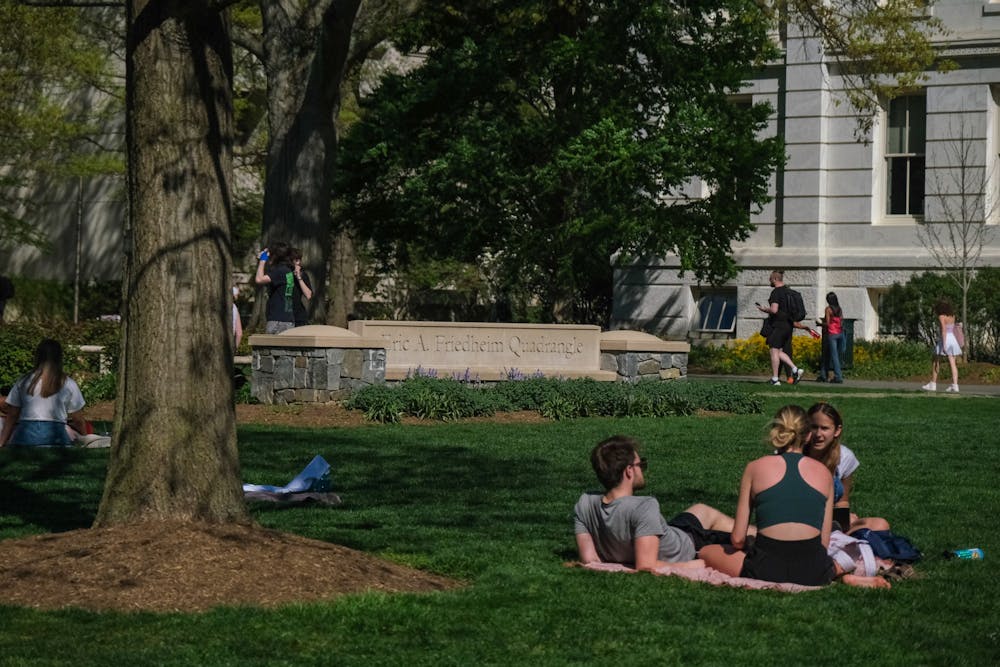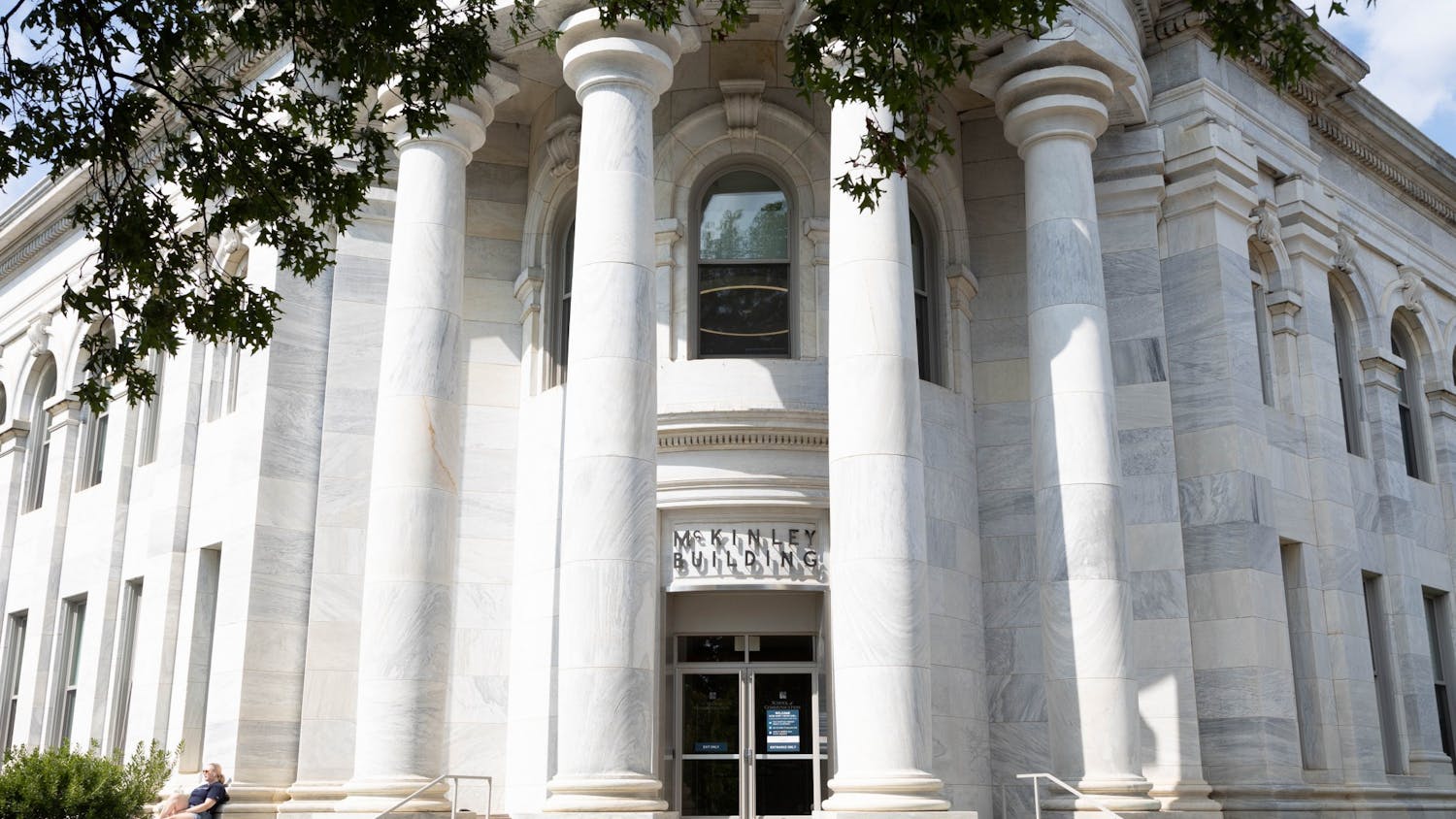American University first accepted a Black student in 1915, 22 years after its founding. Today, people of color make up nearly 50 percent of the school’s student population. The race-conscious admissions policies the school has used for years, which likely helped to diversify campus, were struck down in a recent Supreme Court ruling.
Like many universities, AU is reeling from the Supreme Court’s decision to end race-conscious admissions. The Court’s decision to prohibit the consideration of race as a factor in admissions means many universities — AU included — will need to update their policies.
The ruling
In a 6-3 ruling against the University of North Carolina at Chapel Hill and 6-2 ruling against Harvard University, the Court ruled that universities can no longer consider race as a factor in holistic evaluations of applicants. The rulings overturned nearly 50 years of precedent that allowed race to be considered as one of many factors in admissions in order to create a diverse student population.
Authoring the majority opinion, Chief Justice Roberts wrote that the policies at Harvard and UNC violated the Equal Protection Clause of the 14th Amendment and Title VI of the Civil Rights Act of 1964 because they “lack sufficiently focused and measurable objectives warranting the use of race” and rely on racial stereotypes.
Notably, however, Roberts added that nothing in the decision should prevent universities from considering how an applicant says race has affected their life, which they might do in an application essay.
The AU community responds
In the days following the decision, the University’s Office of General Counsel and Office of Enrollment began a thorough analysis of the decision’s impacts, according to Elizabeth Deal, assistant vice president for community and internal communications at AU.
In an email to the University, AU President Sylvia Burwell reaffirmed the University’s commitment to diversity and discussed ongoing efforts to evaluate the decision’s impacts on AU. She cited upcoming guidance from the Department of Education and consultation with campus and national experts as factors in the analysis.
“Although the Supreme Court’s decisions will likely change how we approach our work, our commitment to our values of inclusive excellence and human dignity, and to each other as members of this special community, will not waver,” Burwell wrote in the email.
Since offices’ analyses are ongoing, the University has not yet released specifics on how the Court’s decision has impacted its work for diversity and inclusion.
Alongside this national change, AU is facing administrative changes in its admissions office as well. Evelyn Thimba, the University’s new vice president of undergraduate enrollment management, began at AU on July 10. As AU’s analysis is ongoing, it is unclear how her onboarding will impact the University’s decisions. The ruling undoubtedly places extra challenges on her start at AU as she endeavors to lead AU’s implementation of adjusted policies and new strategies.
One thing is clear: AU — like many other universities — will no longer be able to consider race in admissions the same way it had before, and in order to continue advancing diversity in admissions, the University will have to implement new strategies.
Beyond race-conscious admissions, AU has also used other strategies. These include tailored recruitment and partnerships with organizations serving minority and low-income students to create a diverse student body. Though these additional programs are not directly impacted by the ruling — as they do not impact whether race is considered in a student’s admission — the University may adjust them to account for the lack of racial consideration in admissions decisions.
The University’s Strategic Plan describes tailored recruitment efforts which cater towards “Latinx, Black/African American, Asian, military-affiliated, and DC Public Schools students.” These efforts include informing incoming students of the value of an AU education and providing support as they transition to life at the University.
In addition, AU’s Inclusive Excellence Plan discusses the Office of Enrollment’s ongoing work to partner with organizations that serve minority and low-income students. The 2019-2025 Strategic Plan Progress Report: Year 4 notes partnerships with IDEA Public Schools and College Track.
The University will also need to decide how to approach Roberts’ statement that “nothing prohibits universities from considering an applicant’s discussion of how race affected the applicant’s life.”
University officials aren’t the only ones considering how the decision impacts AU. Student groups have already begun discussions of the ruling as well, with AU’s Student Government holding a virtual town hall on the subject on July 6.
The sparsely attended event gave students the opportunity to share initial reactions and offer suggestions of how the University could be more supportive for students of color.
SG President Edwin Santos along with Vice President Arusa Islam and Senator Denia Smith led the discussion, echoing SG’s statements and sharing disappointment at the ruling and the University’s response. No University officials nor legal experts were present.
Though some students disagreed about the impacts of the decision, they agreed that the University could do more to make students of color feel welcome. Specifically, students spoke about the importance of elevating the voices of affinity and advocacy groups on campus.
Santos said that the SG members present would meet with the administration to share ideas and concerns raised in the meeting.
As the nation moves forward: an AU law professor weighs in
For nearly 50 years, the Court allowed race-conscious admissions policies so long as they were narrowly tailored to serve the interest of a diverse student body and the benefits that come with it.
Washington College of Law professor and education policy expert Lia Epperson broke down the decision and highlighted several of its key elements.
She discussed the Court’s statement that colleges and universities can define their missions as they see fit, saying that while the Court recognized universities’ right to value diversity and equity, it also said that these specific programs could not be rectified with the protections in the Constitution.
She said that “this does remain paramount — the idea that there’s nothing in the Court’s opinion … that challenges institutional aims standing alone associated with diversity associated with equity.”
Epperson also pointed out that the Court ruled specifically on the use of race in admissions and did not address other questions around race-conscious admissions including outreach and recruitment, pathway programs, financial aid and other programs.
When the Court upheld the use of race conscious admissions in the 2003 decision Grutter v. Bollinger, Justice Sandra Day O’Connor wrote in dicta — a statement that is not necessary to the essence of the decision — that she hoped affirmative action would no longer be necessary in 25 years. Epperson noted that this comment built off of the case’s requirement that schools continue to evaluate when it would no longer be necessary to consider race as a factor in admissions.
When asked whether she believed the U.S. had reached a point where affirmative action was no longer needed at colleges and universities, Epperson agreed that schools must continually consider the “best ways to further their educational missions in ways that are positive for all students.”
“I don't think that means that 25 years after that router decision, we are at a point in time where suddenly the true promise of the 14th amendment has been made real,” she said. “That's a piece of it that I think is truly ahistorical, because it is not even looking at the true meaning of what the Equal Protection Clause was designed to do. … The 14th amendment is about acknowledging the history of slavery and white supremacy and [the Supreme Court] was explicitly allowing race-conscious policies and programs for that reason.”
When looking at specific methods to maintain diversity moving forward, Epperson cited a number of strategies, many of which AU has implemented, including targeted recruitment and retention programs, pipeline programs, elimination of legacy admissions, removing standardized test requirements and implementing 10 percent plans, which automatically admit students in the top 10 percent of their high school.
Though the U.S. is divided over the Court’s decision, Epperson said she believes the U.S. is coming to see having an “ethically inclusive democracy” as a strength. This, she says, along with the nation’s broader ideals of opportunity will persist
“I think that the broader ideals of what it means to ensure that pathways of opportunity, particularly educational opportunity, are open to all is something that is irrefutably important, and that will not go away, and that should not be politicized,” Epperson said.
For colleges and universities, she says diversity will continue to be a “really critically foundational goal” because it is central to the nation’s future.
“I think that that is something that we need to talk about in a way that is not political. This is about how to strengthen our democracy,” Epperson said. “It's about, you know, ensuring that we are educating the next generation of leaders in a global marketplace, and all of those can continue to be critically important goals.”
Correction: A previous version of this article said that AU considers applicants' relationships to alumni. AU does not give preference to applicants with legacy status but does track this data for scholarships from the Office of Alumni Relations. The article has been updated to reflect that.
This article was edited by Tyler Davis, Jordan Young and Abigail Pritchard. Copy editing done by Isabelle Kravis.





